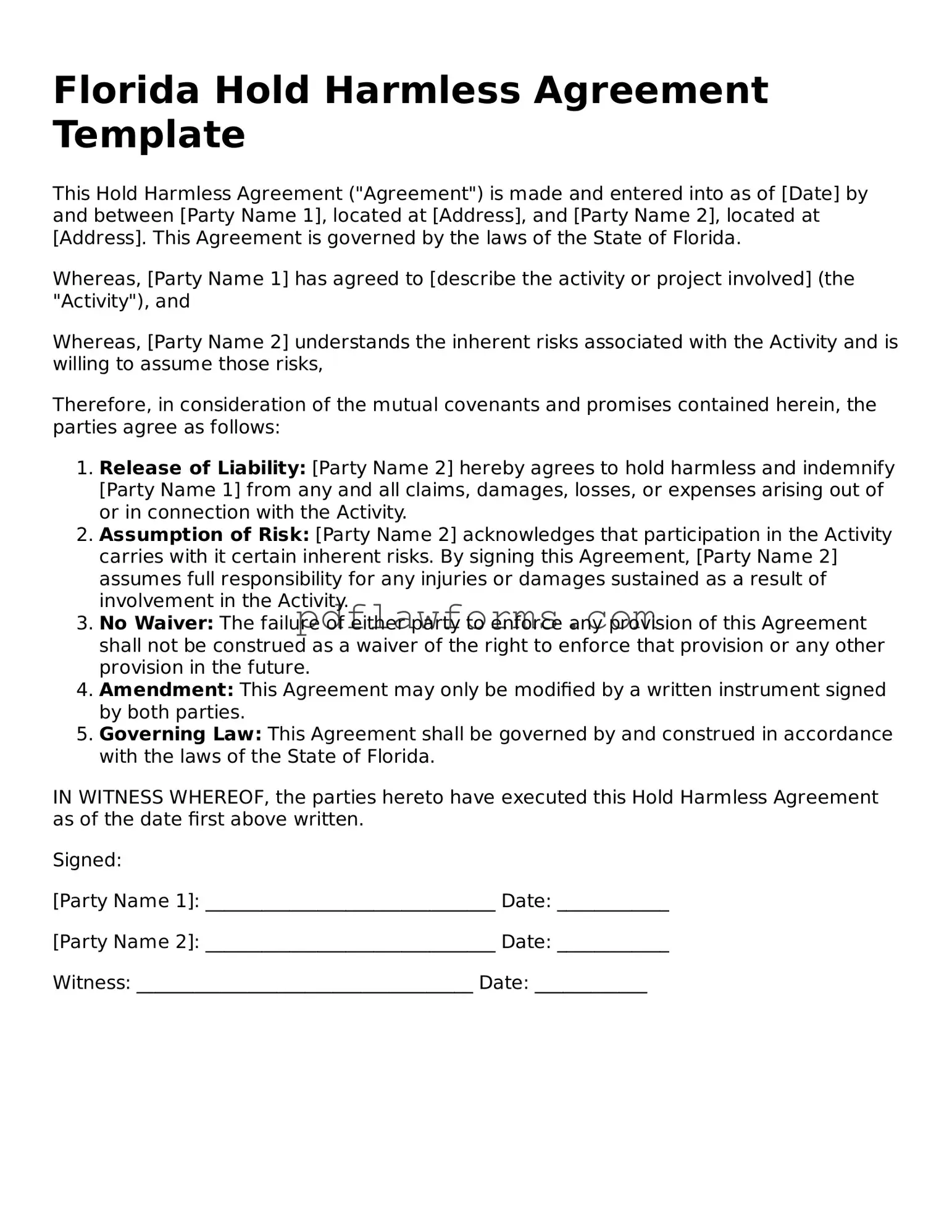Filling out a Florida Hold Harmless Agreement form can seem straightforward, but many people make common mistakes that can lead to complications. One frequent error is not reading the entire document carefully. This can result in misunderstandings about the terms and conditions. Take your time to understand what you are agreeing to.
Another mistake is failing to include all relevant parties. It’s crucial to ensure that everyone involved is named in the agreement. Omitting a party can lead to liability issues later on. Always double-check the names and roles of all individuals or entities involved.
Many people also overlook the importance of specific language. Using vague terms can create ambiguity in the agreement. Clear, precise language helps to avoid disputes down the line. Make sure each term is well-defined and understood.
Not including the date is another common oversight. A Hold Harmless Agreement must have a clear date to establish when the agreement takes effect. Without a date, the enforceability of the agreement can be questioned.
Another mistake is not having the agreement signed by all parties. A signature indicates consent and understanding of the terms. Without signatures, the agreement may not hold up in court.
Some individuals neglect to consult with a legal professional before finalizing the document. While it may seem unnecessary, legal advice can help clarify complex terms and ensure that the agreement is valid and enforceable.
Failing to keep a copy of the signed agreement is also a common error. Always retain a copy for your records. This will serve as proof of the agreement should any disputes arise in the future.
People sometimes forget to update the agreement if circumstances change. If there are any modifications to the original terms or parties involved, it’s essential to revise the agreement accordingly.
Another issue is not understanding the implications of the agreement. A Hold Harmless Agreement can have significant legal consequences. Ensure you fully comprehend what you are signing and the potential risks involved.
Lastly, some individuals may rush through the process, thinking it is a mere formality. Treating this document with the seriousness it deserves can prevent future legal challenges. Take your time to ensure accuracy and understanding.
